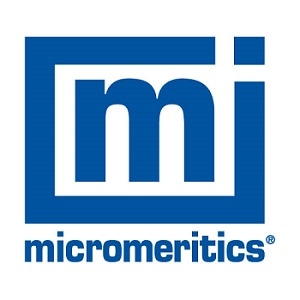The Gemini Analyzer uses the unique balanced measurement technique, which permits small amounts of surface area to be measured using nitrogen gas, which would otherwise only be measurable with krypton. Low surface area samples displace much more nitrogen compared to what they adsorb, especially if made up of low density materials of large particle size.
The standard, integrated, helium free-space difference measurement and mathematical compensation routine can typically eliminate the effects of over 99% of this sample displacement, however even the small amount that remains uncompensated can still be crucial.
Optimizing Free-Space Correction for Low Surface Area Samples
A method to add a compensating volume with negligible surface area into the balance tube has been developed. It can reduce the size of the preliminary imbalance to low levels and enable precise measurement of adsorbed gas. Straight-wall or bulbous sample tubes can be used. Hanging filler rods are advised but not required.
1. Load the sample tube with a suitable quantity of sample.
2. Load the balance tube with glass beads that have a total volume approximately the same as the sample volume.
- Determine the volume (v) of the sample in cm3:
v = w * ρ
Where:
w = mass of sample (g)
ρ = density of sample (g/cm3); if density is unidentified, refer to the users’ laboratory handbook
- Determine the number (n) of glass beads required to equal the sample volume:
n = v ÷ 0.014 cm3
Where:
0.014 cm3 = approximate volume of one bead
3. The sample should be outgassed in the sample tube at a suitable temperature for an adequate amount of time.
4. Install the sample tube (containing the outgassed sample) onto the analysis port and the balance tube (containing the glass beads) onto the balance port. Hanging filler rods provide best results.
5. The Gemini Anayzer should be set up for a one-point measurement (P/Po = 0.05 to 0.1) so that the initial free-space measurement can be established quickly; then the measurement should be performed.
free space cm3 x 2.515 g/cm3
-------------------------------------------- = mass of glass beads (g)
3.53
6. Using the “measured free space” absolute value and the subsequent relationship, establish the mass of glass beads to remove from (or add to) the balance tube to reduce the free-space imbalance:
Where:
2.515 g/cm3 = density of glass beads
3.53 = thermal correction (no units)
Note: The volume of one glass bead is approximately 0.014 cm3. Therefore, if the measured free space is less than 0.02 cm3, it is unnecessary to correct the free space.
7. Using a beaker of warm water, the balance tube can be brought to room temperature before removing it from the balance port of the Gemini Analyzer to eliminate (or add) glass beads. This prevents moisture from condensing from the laboratory atmosphere onto the cold glass beads.
8. Remove the balance tube:
- If the measured free space is positive (+), remove the calculated mass of glass beads from the balance tube
- If the measured free space is negative (–), add the calculated mass of glass beads into the balance tube
9. Reinstall the balance tube onto the balance port of the Gemini analyzer and continue with the analysis.
Note: For subsequent samples of the same material, the same weight of sample that was used for the initial sample can be used so that the original bead quantity may be left undisturbed on the balance port.

This information has been sourced, reviewed and adapted from materials provided by Micromeritics Instrument Corporation.
For more information on this source, please visit Micromeritics Instrument Corporation.